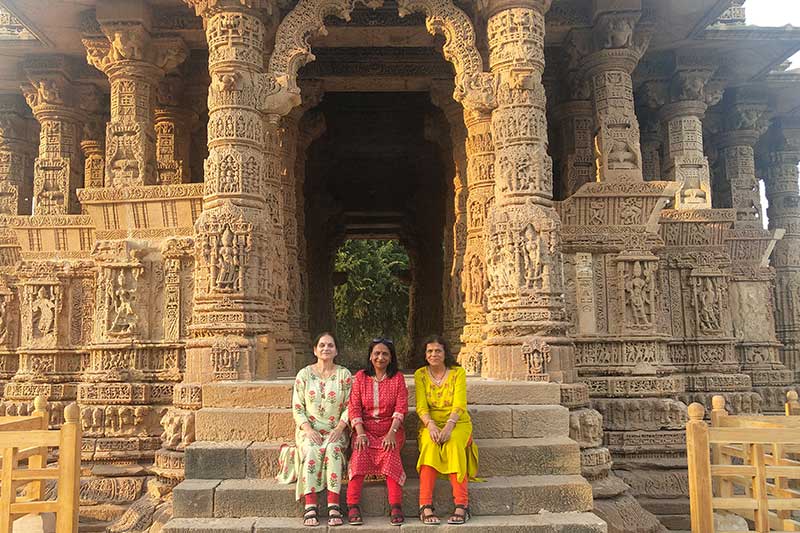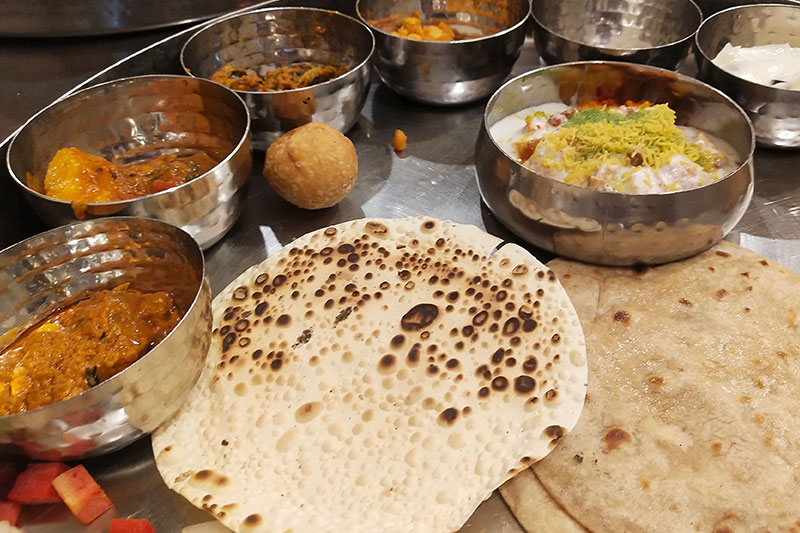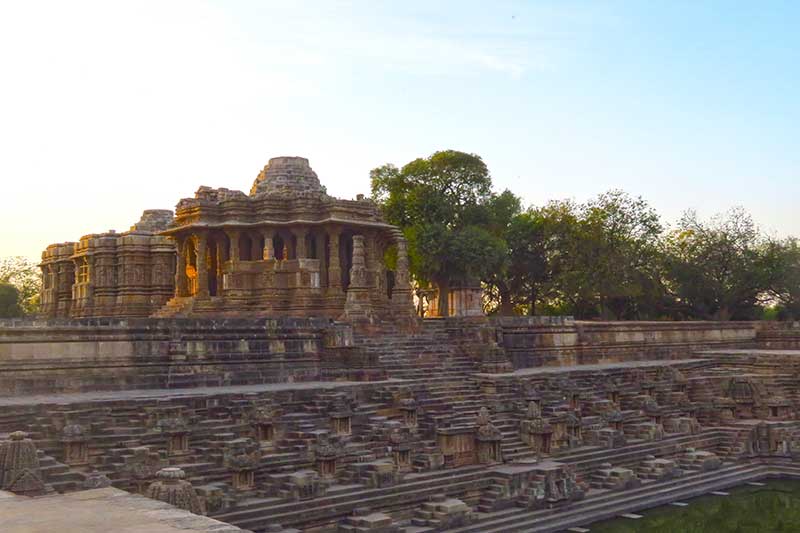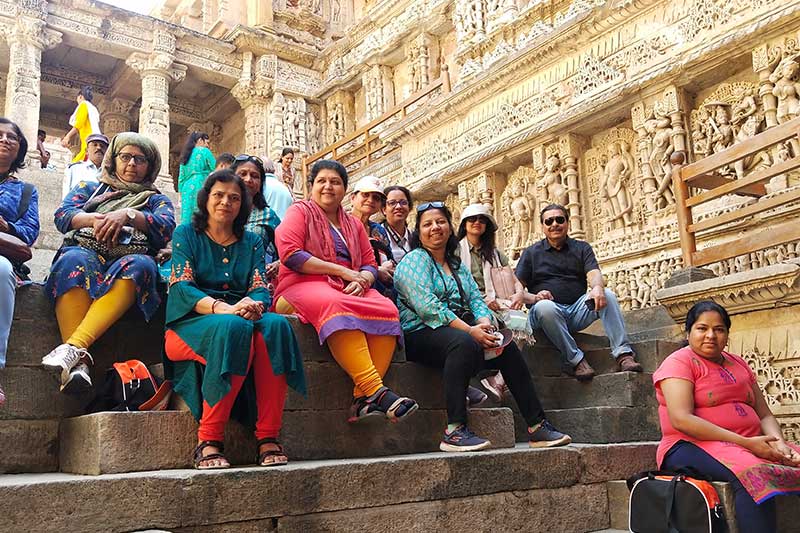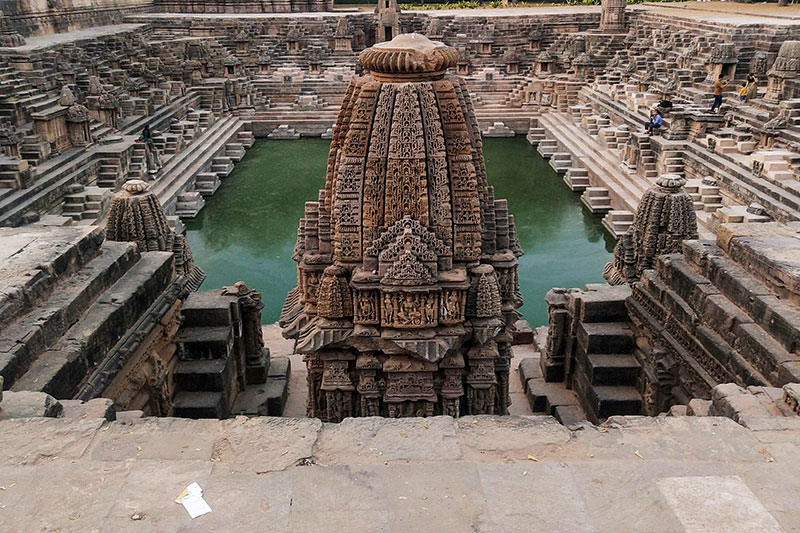Rani Ki Vav
Overview
Okay, we are going to show you Rani ki Vav, the stepwell of the Queen. Wherever you are in India right now, Immediately, No traveling required. Don’t believe us? Well, you are in for a surprise! Now do this, take out a 100 Rupees note from your pocket and turn it over. And tada! There it is, the Rani ki Vav. The reserve bank of India, right after demonetization released a new 100 Rupees lavender note replacing the old one. While the Mahatma's image remains intact, Gujarat's Rani ki Vav has replaced Goecha La, Kanchenjunga's southeast face on the note. Goecha La is a high mountain pass in Sikkim. With a new note, a different heritage is brought to our notice by printing it on something of everyday use and circulation. Sadly, not everyone is aware of it. The government while takes such noteworthy steps, pun intended, must also ensure that everyone knows about what they are actually trying to highlight.
- Rani ki Vav in Patan, Gujrat is a UNESCO World Heritage Site. A beautifully carved stepwell built in the 11th century by the Queen of the Solanki King. Truly an astounding piece of architecture.
- ust near to Patan at Modhera, there lies another architectural marvel built by Solanki King Bhimdeo I in the 11th century acclaimed as Sun Temple of Modhera. One of the few Sun temples in India, Modhera temple has its own unique style of architecture.
- On the route from Ahmedabad to Patan, there is another step well at Adalaj named as Adalaj ni Vav. This stepwell in Gujrat shows a peculiar style of stepwell architecture. It was built in 15th century in the memory of Rana Veer Singh of Vaghela dynasty. Designed for storing water, descending multiple stories, resembling ponds or lakes, these magnificent structures were later adopted and utilized by various dynasties over the course of many centuries for meeting their water needs.
- Lothal is a Harappan Site. It was one of the important cities of ancient Indus Valley Civilization. First inhabited around C. 3700 BCE, Lothal was discovered in 1954. It is discovered that Lothal was a thriving trade center back in ancient times, trading beads, gems, and ornaments. The findings at Lothal consist of township, marketplace and a dock. ASI has raised a museum near excavated areas where some prominent antiquities of the Indus era are displayed.
- What to say about Ahmedabad! The economic and industrial hub of India is situated on the banks of Sabarmati. It is the largest city in Gujrat. During the Indian independence movement in 1917, Mahatma Gandhi established an Ashram on the bank of Sabarmati. In 1930 Gandhiji initiated Salt Satyagraha from this Ashram. Ahmedabad has witnessed many incidences in the ancient, medieval as well as modern history. Maybe for the same reason in 2017, old Ahmedabad has been declared as first UNESCO WORLD HERITAGE CITY.
Such a remarkable peek into life in history gives us a perspective to understand how far we have come and how comfortably we live now. Nonetheless, human efforts have always ensured our survival through the ages.
This tour gives the glimpses from Indus Valley Civilization to the modern industrial era. So let’s get on with the itinerary of the trail.
DETAILED ITINERARY
Board on an early morning flight to Ahmedabad. Arrive at Ahmedabad. Bus and manger will be waiting outside to welcome you. Board the bus and leave for Lothal. Enroute refresh yourself with a good breakfast. Arrive at Lothal and learn about Harappan culture from an eminent Indologist. Later have glimpses of museum raised by Archeological Survey of India (ASI). After lunch, begin the journey to Ahmedabad. After arrival, check into the hotel and get refreshed. Spend an evening at leisure. Enjoy yourself with some shopping. Stay at Ahmedabad.
Highlights
- Visit Lothal. Lothal, an important Harappan site in India had been a vital trade center in ancient times. Lothal shows some peculiar features of town planning of Indus Valley Civilization.
After having full breakfast, check out of the hotel and leave for Patan. Enroute visit Adalaj ni Vav. Then proceed for Modhera. At Modhera, experience the beauty of intricately carved Sun Temple. Such a remarkable piece of architecture! Afterward, leave for Patan. After arrival, check in to the hotel and enjoy your lunch. ( Ahmedabad – Patan Distance: 125 km, 3Hrs) Relax with a small nap and get refreshed to visit Patola museum. Enjoy shopping of Patola Sarees. Stay at Patan.
Highlights
- Visit Adalaj ni Vav
- Experience the marvel of Sun Temple at Modhera
- Visit the Patola Museum and enjoy shopping Patola Sarees.
After breakfast check out of the hotel and proceed to witness the masterpiece in the step well architecture, Rani ki Vav. Behold this remarkable grandeur of Solanki architecture. Learn the sculptures and architecture styles. Afterward, leave for Ahmedabad airport. Board the flight to Pune in the evening and reach Pune with moments to cherish.
Highlights
- Witness the wonder of stepwell architecture, Rani ki Vav. UNESCO described Rani ki Vav as something built “at the height of craftsmen’s’ ability in stepwell construction.” When you are here, it feels like, as if the sculptures here might just start speaking to you.
INCLUSIONS
- To and Fro economy class airfare from Pune to Ahmedabad and back to Pune.
- Local Transport by 2 x 2 AC coach.(Depends on group size, seating capacity will be variable)
- Accommodation in comfortable and convenient hotels on twin sharing.
- All meals. ( Breakfast, Lunch, Dinner, Evening Tea- set menu)
- Entrance fees of all sightseeing.
- 1-liter water bottle per person per day.
- Expert charges.

EXCLUSIONS
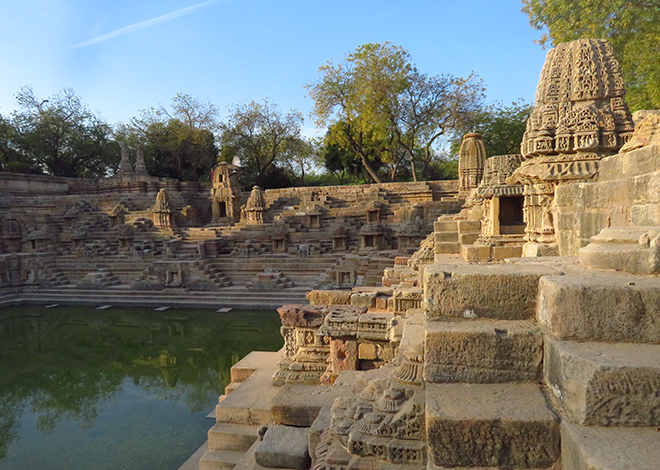
- Govt. taxes of 5% over and above the tour cost.
- Any implementation of new taxes by the government.
- Cost of insurance.
- Cost of Pre/Post tour accommodation.
- Any extra expenses such that porterage, laundry, telephone, shopping, alcoholic beverages, mineral water, items of personal nature and food or drink which is not part of a set menu.
- Any extra expenses incurred due to illness, accident, hospitalization of an individual.
- Anything specifically not mentioned in the inclusions.
FEW POINTERS
- If any sightseeing mentioned is not done due to any unforeseen circumstances then an alternate sightseeing will be done.
- A traveler may please note that for domestic and international flights, the baggage allowance will be as per respective airline’s baggage policy and weight regulations. Travelers are requested to carry their luggage in accordance with the regulated baggage allowance. Excess baggage will be chargeable and the same is not included in the tour cost. It has to be borne by the traveler.
- Air tickets issued at special rates are normally NON REFUNDABLE and traveler will need to bear the cancellation charges. If a traveler needs an air booking with the refundable option then he/she will need to bear extra fare specified by airline operator.
PAYMENT POLICY
|
Tour Cost |
Payment |
|
Below package cost ₹ 20, 000 per person |
Full payment at the time of booking |
|
Above package cost ₹ 20,000 per person |
|
|
At the time of booking |
40% of the package cost |
|
30 days prior to departure |
Remaining 60 % amount |
- Payment can be done via cheque, Demand Draft, NEFT, RTGS, IMPS, Credit Card/ Debit Card or UPI gateway. Cheque/Demand Draft should be drawn in favor of “ANCIENT TRAILS”.
- In case of payment made by cheque, a booking confirmation will be given subject to cheque clearance.
CANCELLATION POLICY
|
Cancellation received no. of days prior to departure |
Cancellation charges applicable per person |
|
0-10 |
100% |
|
10-20 |
50 % |
|
20-30 |
30 % |
|
30 and above |
10% |
- For cancellation procedure, a traveler will need to give an application in writing along with an original receipt of booking.
- Please note that if air ticket booking is done with NON-REFUNDABLE airfare then cancellation charges to be borne by the customer and the remaining amount will be refunded as per above cancellation policy.

